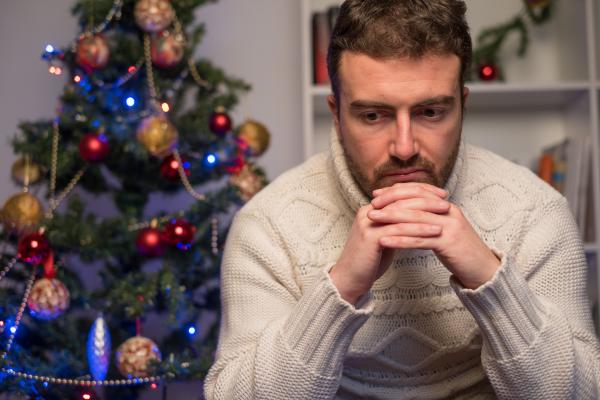It is a longstanding myth that suicides surge during the holiday season. According to the Centers for Disease Control and Prevention’s (CDC) National Center for Health Statistics, the suicide rate reaches its lowest of the year in the month of December.
The Spring and Fall apparently reflect peak times— a rather consistent finding in recent years. Regardless of this nuance, suicide is a major public health threat impacting all ages, careers and socioeconomic strata prompting a rippling devastation of families and communities throughout the calendar year.
Spurred by the Germanwings Flight 4U 925 crash last year, the journal Environmental Health just published their research on airline pilot mental health. As you may recall, it was determined the 27-year-old co-pilot intentionally doomed the flight while evidence discovered on post-crash investigation suggested he suffered from clinical depression.
The work concluded “hundreds of pilots currently flying are managing depressive symptoms perhaps without the possibility of treatment due to fear of negative career impacts. This study found 233 (12.6%) airline pilots meeting depression threshold and 75 (4.1%) pilots reporting having suicidal thoughts.” Due to the data’s limitation by being a cross-sectional descriptive study via anonymous web-based survey, generalizing throughout the entire industry is somewhat impaired. But, the message that an impactful number are struggling can help guide further study and increase mental health support.
As the 10th leading cause of death in the United States, suicide spares no season, occupation, ethnicity, gender or phase of the life span. In 2013, 41,149 achieved their goal that year with more than 494,169 visits to the emergency room for self-injurious behaviors. This is a presumptive underestimation given many don’t report when they make attempts or have thoughts of harming themselves.
Loved ones are adversely affected. Sometimes acute and chronic medical problems arise as a consequence of a failed attempt. It is estimated by the National Center for Injury Prevention and Control’s Division of Violence Prevention that $51 billion in combined medical and work loss costs can be attributed to suicide.
Last week, the Journal of the American Medical Association (JAMA) reported findings of research that explored the prevalence of depression, depressive symptoms, and suicidal ideation among medical students. In their systematic review, a 27.2% prevalence of depression or depressive symptoms and 11.1% for suicidal ideation was reported in this population urging more work be done on strategies to combat these disorders.
Dr. Srijan Sen, a co-principle author, told CNN: “Military populations, women in the peri- and postpartum period, people taking care of sick parents and primary caregivers—all of these groups have high rates of depression, PTSD (aka post-traumatic stress disorder), anxiety or other mental illnesses related to stress. Maybe some of the factors that we find in physicians will carry over to these other populations.”
Though certain disciplines and situations carry intense stress and increase risk, this issue influences everyone. There is no one cause. Prior suicide attempts, alcohol and drug abuse, mental illness and depression history, family history of suicide or violence, medical diagnoses, and feelings of isolation can exacerbate risk.
Men are four times more likely than women to die this way. They reflect 77.9% of all suicides being the 7th leading cause of death for males. Females have suicidal thoughts more often than men. It is the 14th leading cause of death for them.
As per the CDC, suicide rates have steadily increased from 1999 through 2014. They further proclaim the percentage of suicides involving firearms and poisoning declined during this time frame, while those involving suffocation escalated. The age-adjusted rate increased 24% with more rapidity after 2006, with the greatest bumps for females 10-14 and males 45-64. To learn more about trends, go to Increase in Suicide in the United States, 1999-2014.
The data on this goes on and becomes ever more disturbing since it manages simply to build and build on itself. Suicide prevention is of critical import on all fronts in all arenas. We are all susceptible. Recognizing when you or someone else needs help is a crucial first step. Acting upon it can mean life or death.
Formal supportive mental health services are essential, but so is early detection of warning signs and reinforcing connections between people and their communities. Sometimes it is a phone call or a visit that sways a decision. Don’t dismiss changes in behavior, in particular, if someone is using more substances, not eating or sleeping, or has a significant change in mood.
If there is even a whiff of suicidal intent or thought, then quickly providing that individual supportive services is essential as the stakes are just too high. Through care, empathy, connection and mutual concern, we can make a difference in prevention and turn the rates in the right descending direction.
Notes:
If you need help or know someone who does, contact the National Suicide Prevention Lifeline at 1-800-273-TALK (1-800-273-8255).
For more information on seeking services and information on suicide and its prevention:
Centers for Disease Control and Prevention www.cdc.gov/violenceprevention
National Institute for Mental Health www.nimh.nih.gov
Suicide Prevention Resource Center www.sprc.org
Preventing Suicide: A Global Imperative www.who.int/mental_health/suicide-prevention/world_report_2014/en/




